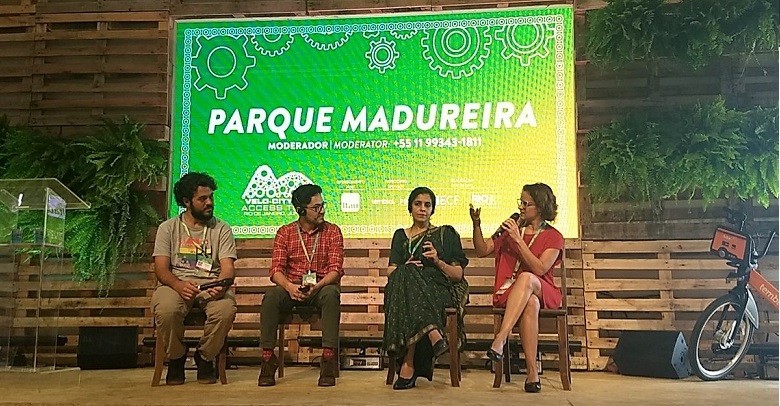
Velo-city day 2: Gender inequality is still too prevalent in cycling (and mobility)
Four top notch speakers were on stage today, talking about the gap in cycling between men and women, which is still too wide. Anvita Arora, Program Director of the Transport and Urban Infrastructures vertical of KAPSARC and strong advocate for women’s rights in mobility, launched the panel with an eyes-opening presentation on the biases still present in urban infrastructure and transport: “Women are biologically and culturally different from men, we need to think specifically about their needs if we want them to use our infrastructure. For example, 500m is the average distance people are usually ready to walk to reach a public transport station, but that might be too much for a pregnant woman. Another example is the type of trips women take: they often carry groceries or a child when they cycle, and at no bike parking there are facilities to help these operations. We need to start thinking less about the average and more about all the different people that live in our cities”.
Suzana Nogueiro was the second speaker, and gave another unsettling presentation on the accessibility of cycling and infrastructure for women: “Women, much more than men, feel vulnerable in the urban space: we need to account for them when planning it. In Sao Paulo, although only 0,5% of women cycle, they represent almost a third of all the users of cycle lanes, meaning they need safe infrastructure. We must look at the quantitative data we have with a qualitative lens that helps us bypass all the biases urban planners have”.
Galo Eduardo Cardenas, among the organisers of the World Bicycle Forum, followed on stage, presenting the results of his research on the theme of gender inclusion in cycling.
JP Amaral, co-founder of the cyclist’s organisation Bike Anjo, closed the panel with an introduction to the work they are doing all over the world to ensure all potential cyclists feel safe, welcomed and empowered on the street. He concluded with a reflection on how technology can help us with this: “(Big) data sets are a powerful tool to understand how a city lives and moves, but we have to make sure they are collected and analysed in an inclusive way and not automatically: otherwise all the current preconceptions will be repeated again and again and again.”
Contact the author
Recent news!
Upcoming events
Contact Us
Avenue des Arts, 7-8
Postal address: Rue de la Charité, 22
1210 Brussels, Belgium









